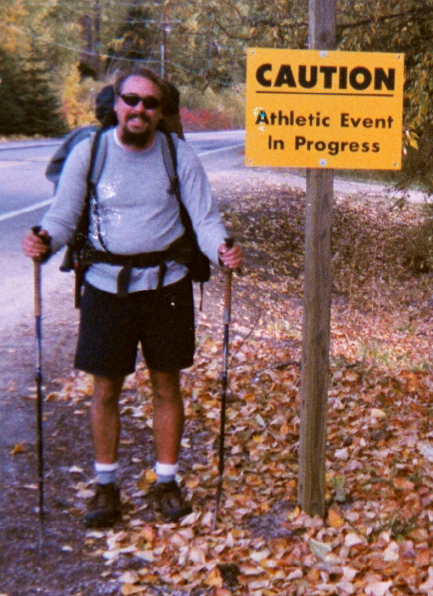Stewart Udall
Writing in support of national trail day.
Read it all. National Trail Day is June 7.
Eighty years ago, when I was growing up on a ranch near St. Johns, Ariz., trails formed the contours of my world. I'd take a trail to get to a neighbor's house or follow one along the river if I were looking for stray cattle. Trails were the most practical way of getting around. They were also irresistible to me. I'd walk a trail just to see where it led.
Since 1968, a unique partnership of volunteers and government has quietly blazed a vast, still unfinished, system of national trails –– laying down a foundation for the next generation of curious adventurers. Just as in the 20th century when we preserved remote wildernesses as national parks, the 21st century may well be devoted to connecting our communities and precious natural landscapes via this 40,000-mile national historic and scenic trail network. From my home I look out on a footpath leading into the mountains and think about the age-old pull of America's trails –– the ones through Cumberland Gap and over the Continental Divide, across the Rockies and the Sierra Nevada.
One of the greatest overland migrations in history followed a trail: During the mid-1800s nearly 400,000 emigrants walked or rode over the Platte River Road, the dusty thoroughfare formed by the convergence of the Oregon, California and Mormon trails.
Early drafts of American history are recorded in the diaries of people who followed frontier trails. Much of that history would have passed into oblivion, ploughed under or paved over, were it not for national trails legislation signed by President Lyndon Johnson in 1968, just 40 years ago. Those of us who endorsed the legislation wanted to make it possible for Americans to share some of the adventure, the toil and even a bit of the danger experienced by our forebears. Today's national trails system draws uncounted millions of Americans annually. Our national trails extend from Maine's Mount Katahdin, where the Appalachian National Scenic Trail begins, to Nome, Alaska, where the Iditarod Trail ends. Wisconsin's Ice Age Trail traces the southern reaches of the last glacier to push down over North America. The Trail of Tears National Historic Trail follows the route taken by 16,000 Cherokee when they were driven from their home in southern Appalachia in 1838 and forcibly relocated to Oklahoma's Indian Territory.
Read it all. National Trail Day is June 7.

No comments:
Post a Comment